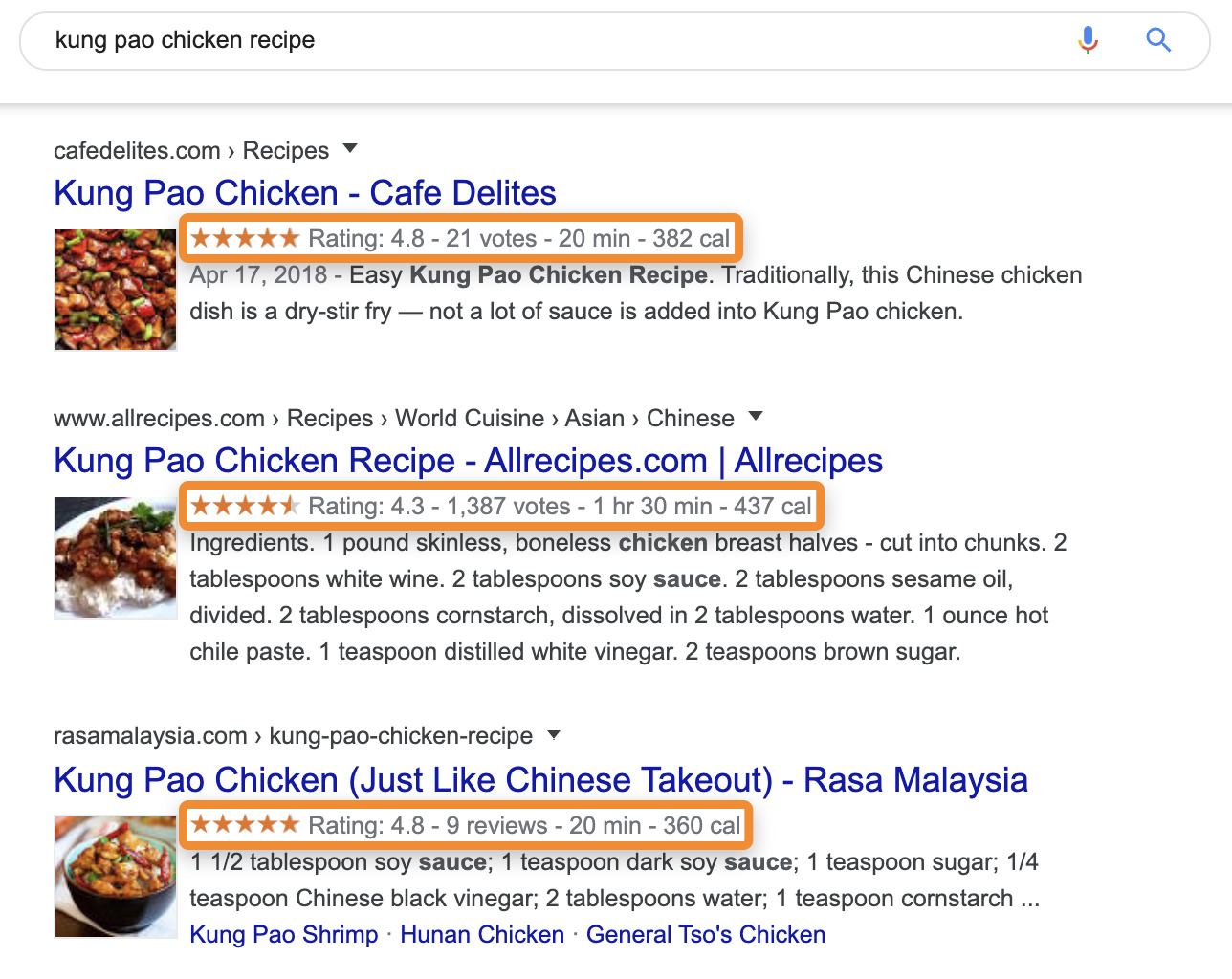
Instead of this?

In this guide, you’ll learn:
- What rich snippets are
- When rich snippets show up
- The difference between rich snippets and rich results
- How rich snippets improve SEO
- How to get rich snippets
Rich snippets are visually more appealing search results with additional valuable information displayed alongside the title, description, and URL. The extra information comes from structured data on the page.
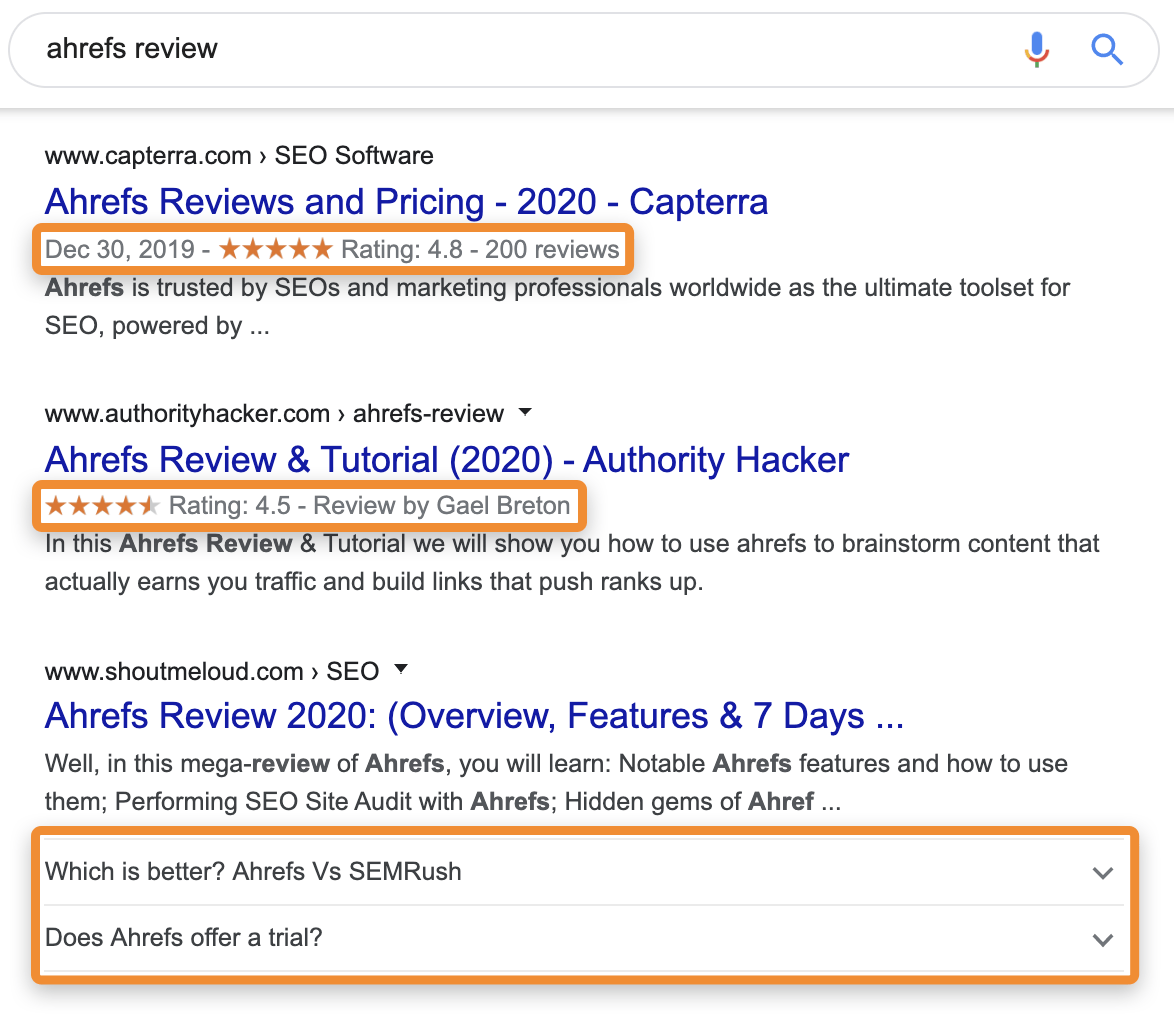
Rich snippets can only appear for pages with certain types of information, and they can be limited further by a device type. For example, “how to” rich snippets can only be shown on mobile devices:
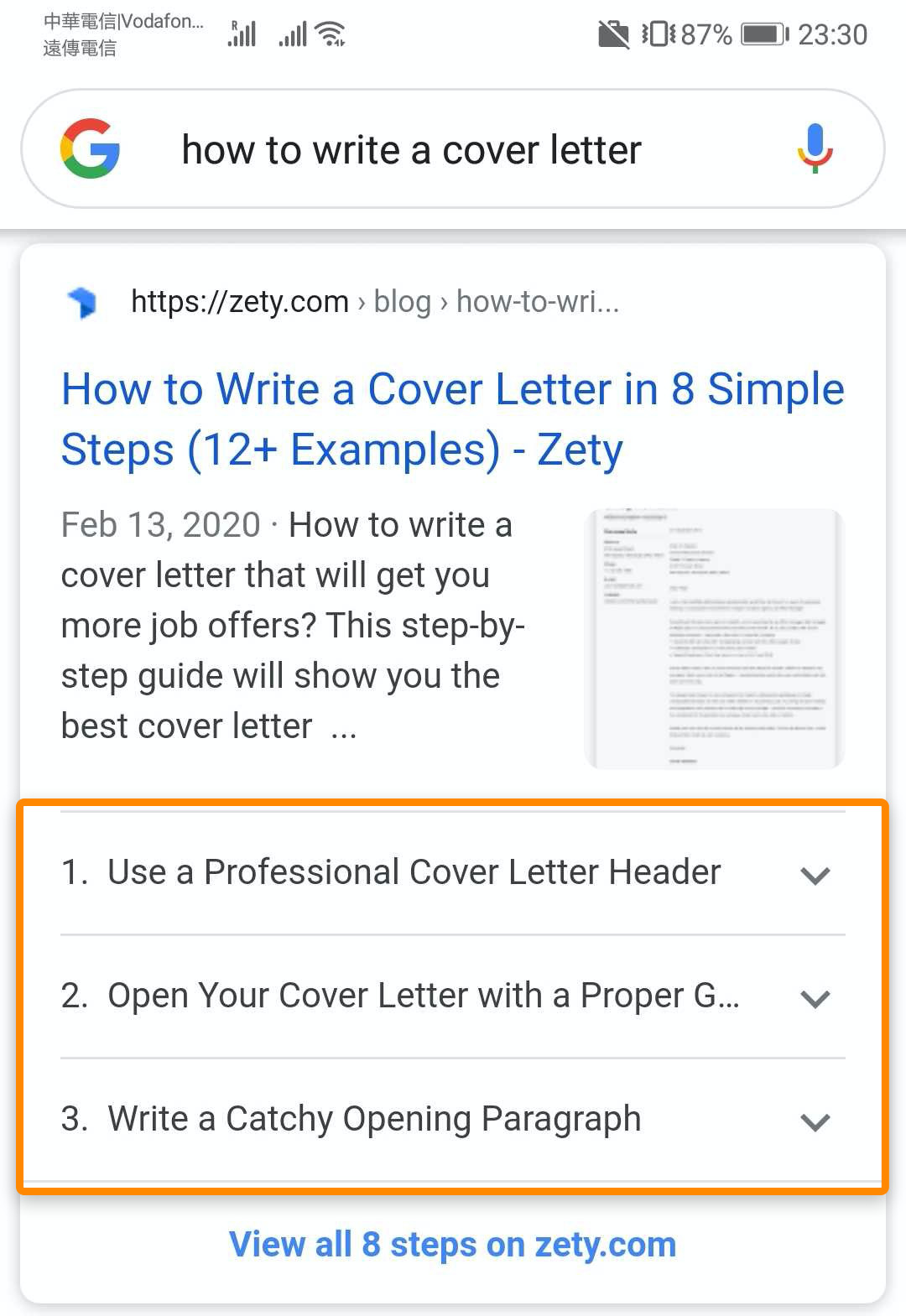
You might have encountered the term “rich results,” which is often used interchangeably with “rich snippets.”
SERPs are rather complex these days. Just look at the poll results when I asked what people think this is called:
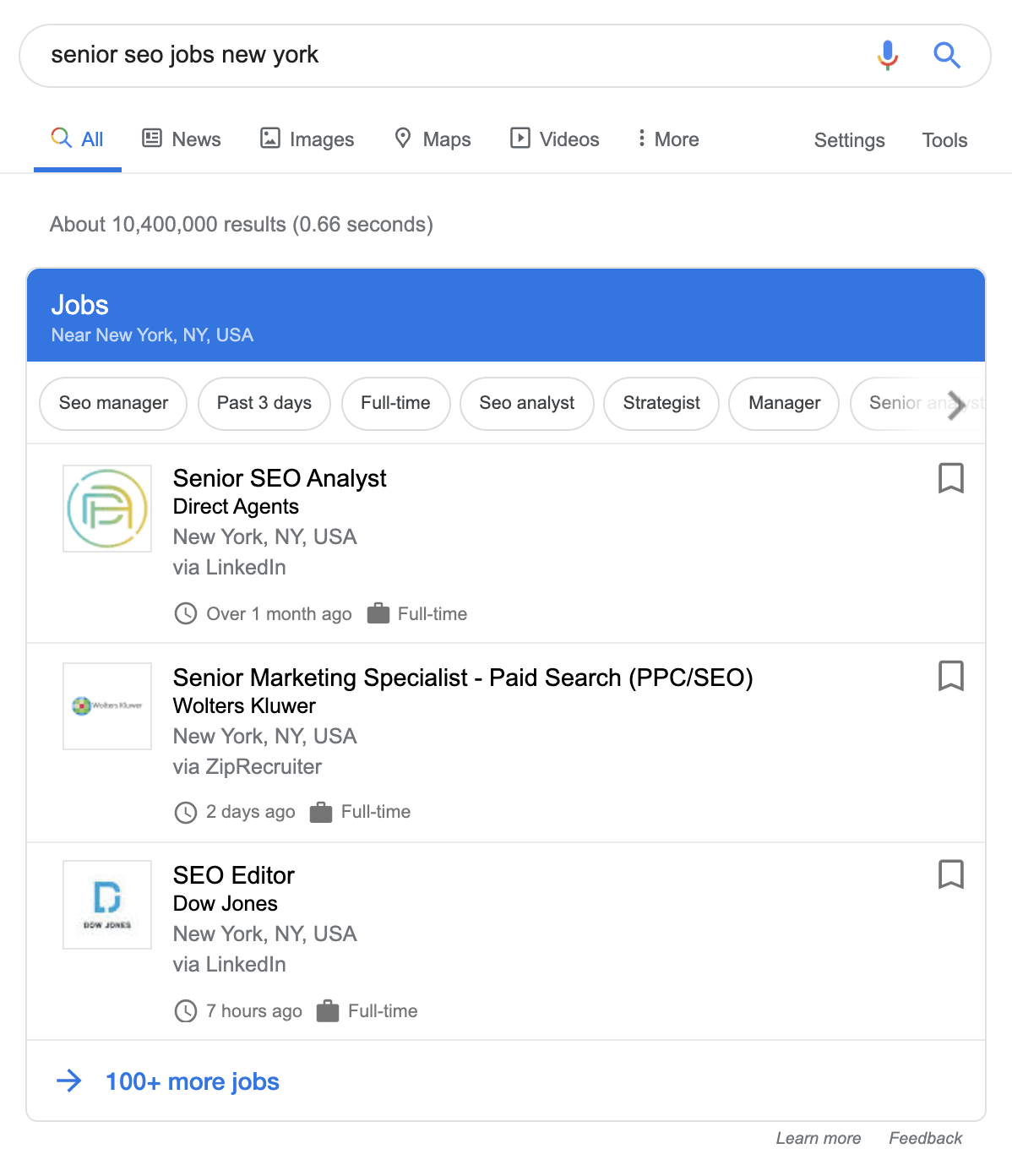
Vote here:— Michal Pecanek (@michalpecanek) March 31, 2020
There’s definitely not a consensus.
The “SERP thing” in the picture above is officially called an interactive rich result…

Definition from Google’s search gallery.
…or is it an “enriched search result?”
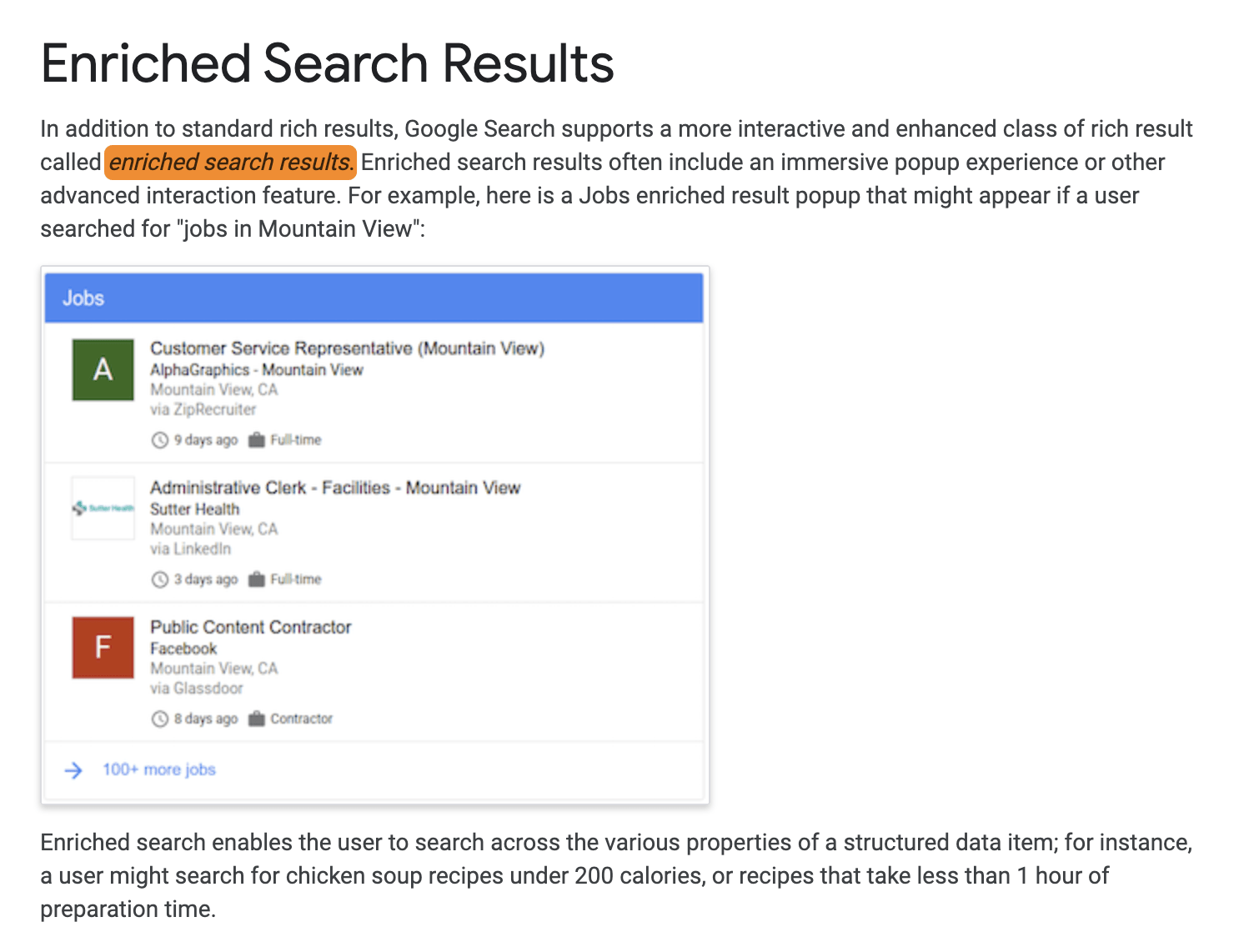
Google’s lack of consistent terminology certainly doesn’t help matters here.
Here’s our take on the terminology:
- Rich snippets: Regular search results with additional information displayed alongside the title, descriptive snippet, and URL.
- Rich results: Any type of visually-enhanced search result with information pulled from relevant structured data. Rich snippets are a type of rich result.
- SERP features. Anything that’s not a traditional “blue link” search result. Featured snippets, PPC ads, tweet boxes, and Knowledge Panels are all types of SERP features.
Ranking high in search results is great, but what ultimately makes people click through is the content of the snippet. Rich snippets help make your webpages look more enticing in the search results.
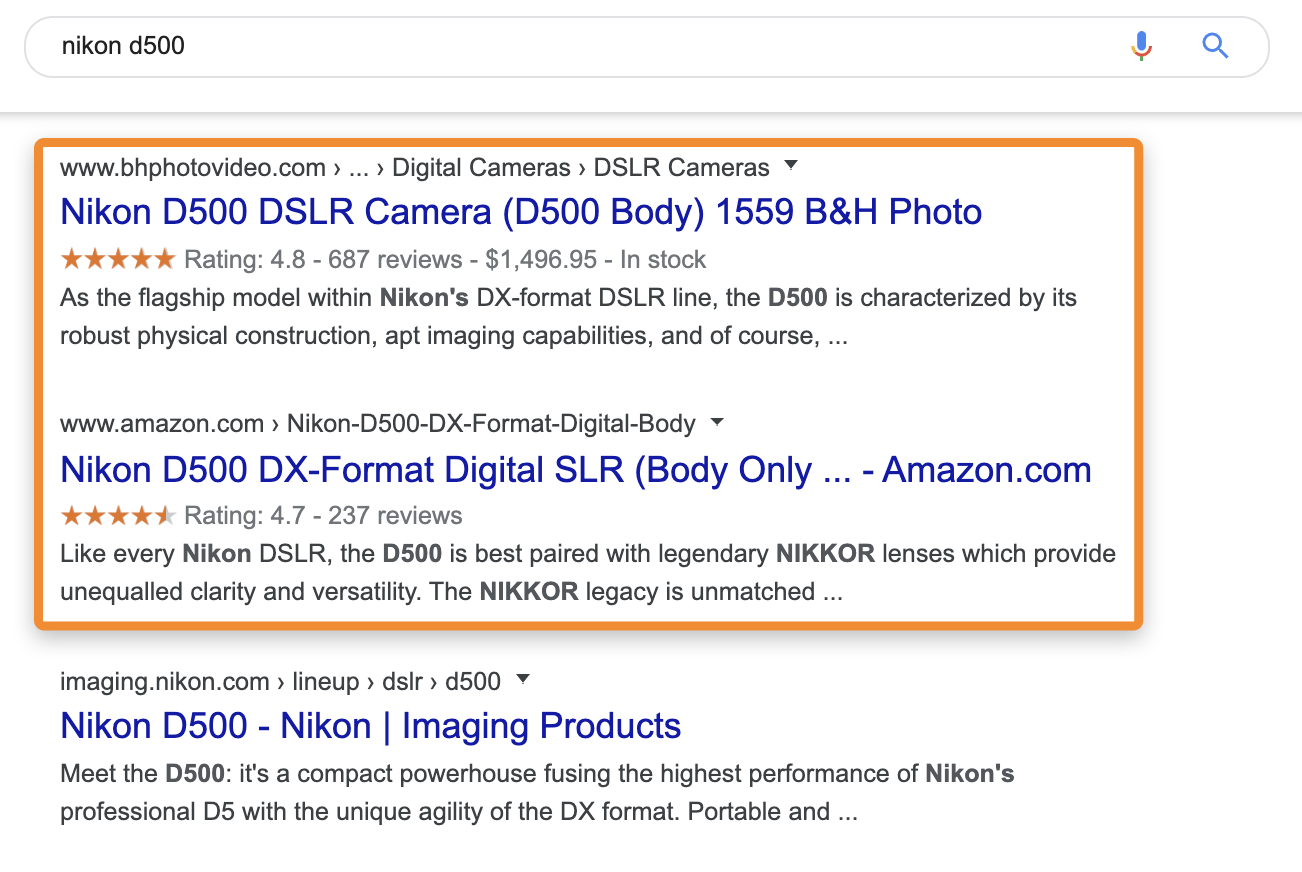
That first snippet is arguably the most enticing because it uses the product schema markup to its full potential. It establishes trust and entices the click by having the most reviews and displaying the price.
You can also use these attributes, such as prices, the number of reviews, ratings, or cooking times for recipes as another competitive layer in the SERP. They’re giving you more space to entice clicks with information that matters. For example, I can imagine more people clicking on a product result that ranks second but is cheaper than the first one.
However, let’s be clear about this:
While having visually attractive snippets may lead to more clicks, rich snippets are not a ranking factor.
Rich snippets are created based on structured data that is available for certain pieces of content. The data is formatted and organized in a way that makes it easy for Google to understand and use it for SERPs and other purposes.
So, instead of Google having to extract key information from something like this…
It will take 20 minutes to make the pancakes. Even better, these are low-calorie pancakes—around 80 per serving.
… they have it in a structured format that resembles this:
cooking time: 20 minutes calories: 80
You can see how the second example would be easier for a machine like Google to read.
Now, when we refer to structured data in SEO, we usually mean the schema.org vocabulary used to mark up your content. Google may then decide to use this markup to enrich your search results.
So, how do you implement this markup, and what types of content can you apply it to?
Here’s how to get the most out of rich snippets in four simple steps.
1. Check which rich snippets are right for you
First of all, standard search result snippets can already offer quite a good overview of the content. For example, in the case of most of our articles, there’s nothing much that can provide additional value for the user.
For instance, what else would you need besides the title, description, and URL for a blog post like this?

The process of getting rich snippets is well-documented by Google. That includes the types of content that are eligible for search results enhancements.
Here is the list of the most common use cases for rich snippets markup:
There are many more options than this, but they apply to quite specific website categories like the recipes that you saw in the beginning. The rest are:
- News, media, and entertainment
- Books
- Education
- Events
- Datasets
- Job-related content
If any of the categories seem relevant for you, go over to the official docs, check the possible enhancements and features for your content type, and decide whether that’s something worth implementing.
For the rest of us, let’s take the FAQ markup as an example and go through the implementation process that can result in something like this:
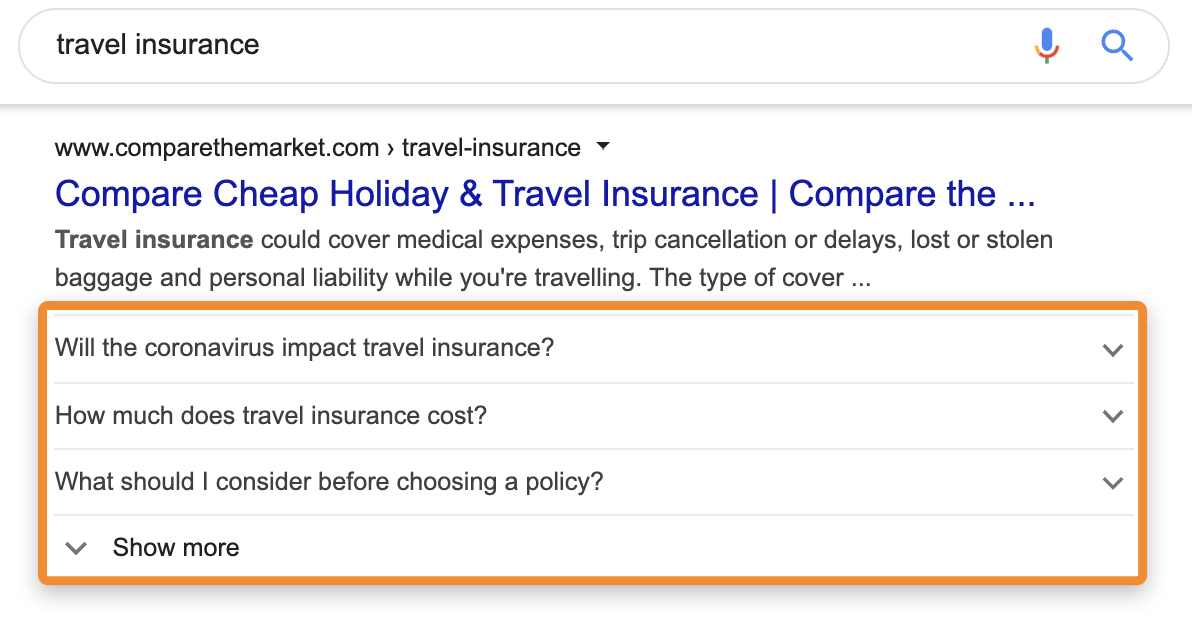
Implementing FAQ rich snippets is quite a popular modern SEO tactic of getting more SERP real estate. Even though it’s listed under the Product type, it can be used on any page that has an FAQ section.
2. Implement structured data
It’s easy to create the markup and deploy it regardless of how your website is built.
Let’s start by presenting the most straight-forward method of deploying the code into the <head> section of your website.
You’ll want to use one of many schema markup generators for this. I chose this one and selected the FAQ Page markup creation:
<script type="application/ld+json">
{
"@context": "https://schema.org",
"@type": "FAQPage",
"mainEntity": [{
"@type": "Question",
"name": "Is it difficult to implement such markup?",
"acceptedAnswer": {
"@type": "Answer",
"text": "No, not at all, there's a lot of plugins and markup generators."
}
},{
"@type": "Question",
"name": "Do SEOs take advantage of the FAQ markup?",
"acceptedAnswer": {
"@type": "Answer",
"text": "Yes, it's quite a popular tactic. While it can provide a lot of value in the SERP, SEOs tend to overuse it to the extent when it's against Google's guidelines."
}
}]
}
</script>
You can also use Google Tag Manager to deploy this code.
Just remember to only add schema for content that’s visible to users and adhere to Google’s guidelines for the selected schema type.
For example, you shouldn’t use FAQ markup for advertising purposes, and it needs to be written by the site itself.
I’m using JSON-LD (JavaScript Object Notation for Linked Data) markup format here. You’ll also come across microdata and RDFa. Don’t use them, stick with JSON-LD. That’s what Google officially recommends, and it’s also the easiest and least messy format.
But what if you use a CMS where deploying custom code is rather troublesome?
If you’re using WordPress, plugins have got you covered. Structured data is supported in multi-purpose SEO plugins like Yoast or Rank Math, or there are even plugins made just for schema implementation.
Yoast is fine for the basics like FAQ and “how to” schema, but you’ll need a more specialized plugin for the wider spectrum of schema types. After going through free versions of the most popular plugins, I liked the user experience and markup options of Rank Math the most.
Sticking with Yoast and our FAQ example, the process is very straightforward (and identical to Rank Math, actually). You just select an FAQ block when creating a page…
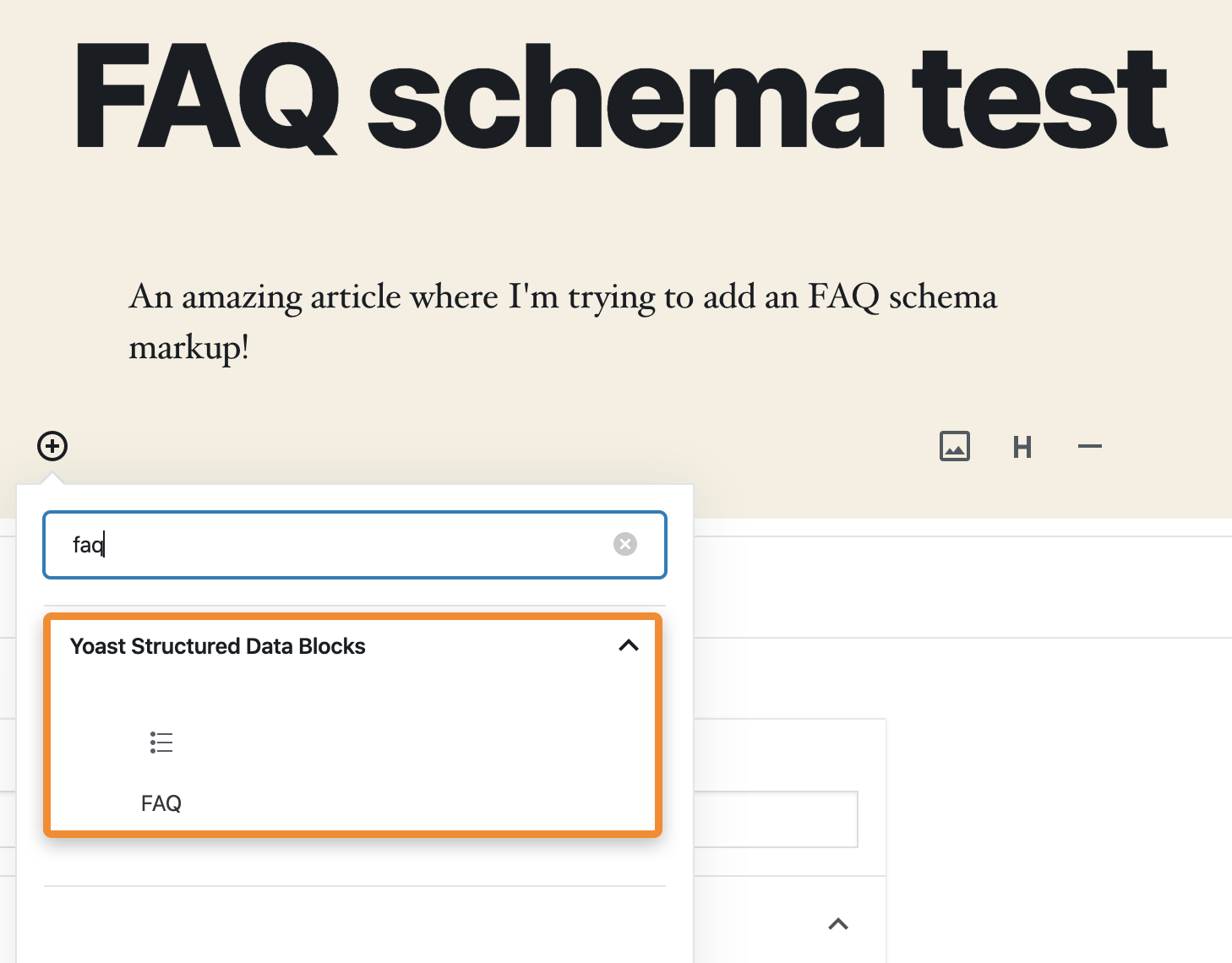
…and fill in the questions and answers:
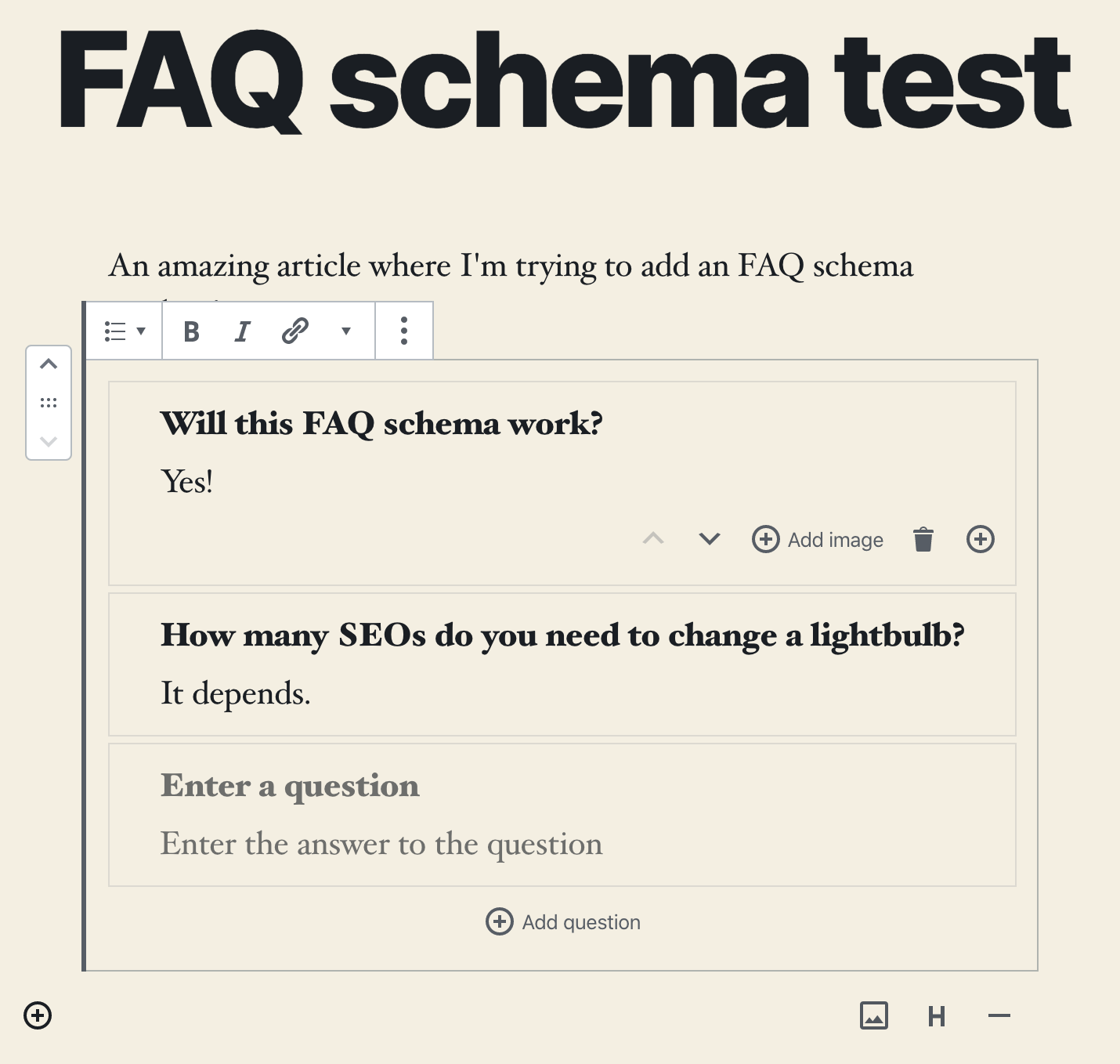
Deployment processes depend on the plugin and the schema type, there’s no magic shortcut or one-fits-all guide for this. Just go through the documentation of the plugin of your choice to see how it works with your chosen schema type.
3. Validate the markup
Using markup generators and plugins already makes the markup deployment process kind of foolproof. But it’s a good practice to run it through Google’s Rich Results Testing Tool. This will immediately tell you whether the code or page is eligible for rich results.
Keep in mind the word “eligible” because rich snippets are not guaranteed.
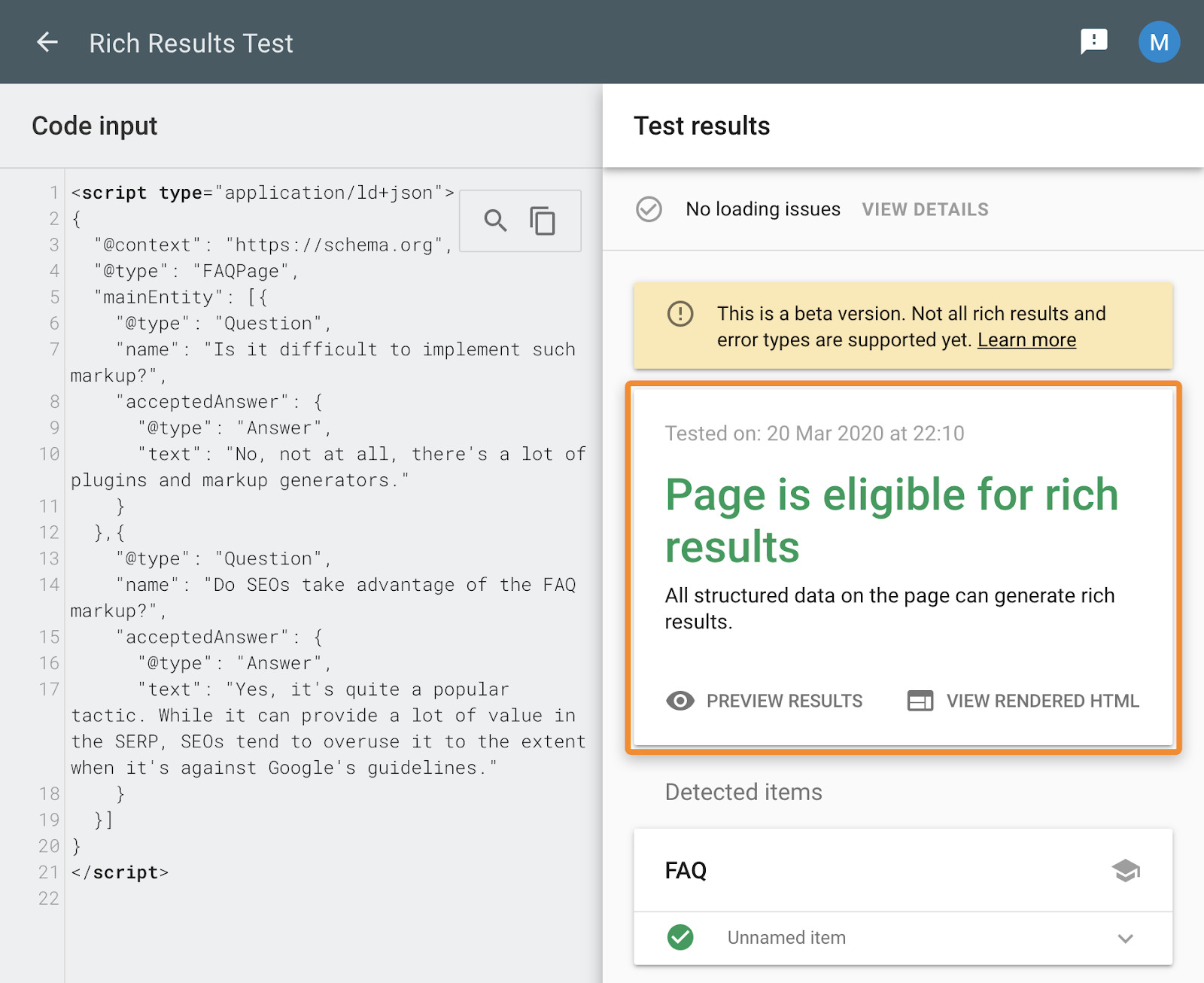
You can also use a URL input if the markup is already in production. That’s good for arbitrary checks but useless for sitewide monitoring.
4. Monitor marked-up pages for performance and errors
Google doesn’t hold back even in this regard. Everything that you need here is in Google Search Console.
You can filter your performance reports by the type of rich results:

And see all the eligible markup types that Google detected on your site:
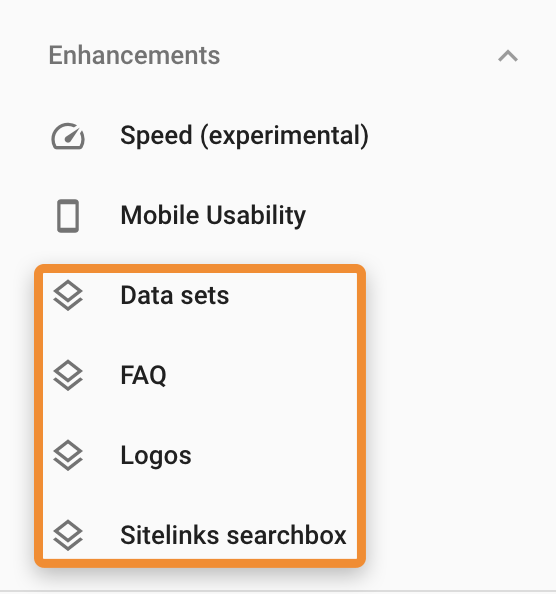
Clicking on a rich snippets enhancement takes you to a report showing URLs that are valid, invalid, and have warnings.
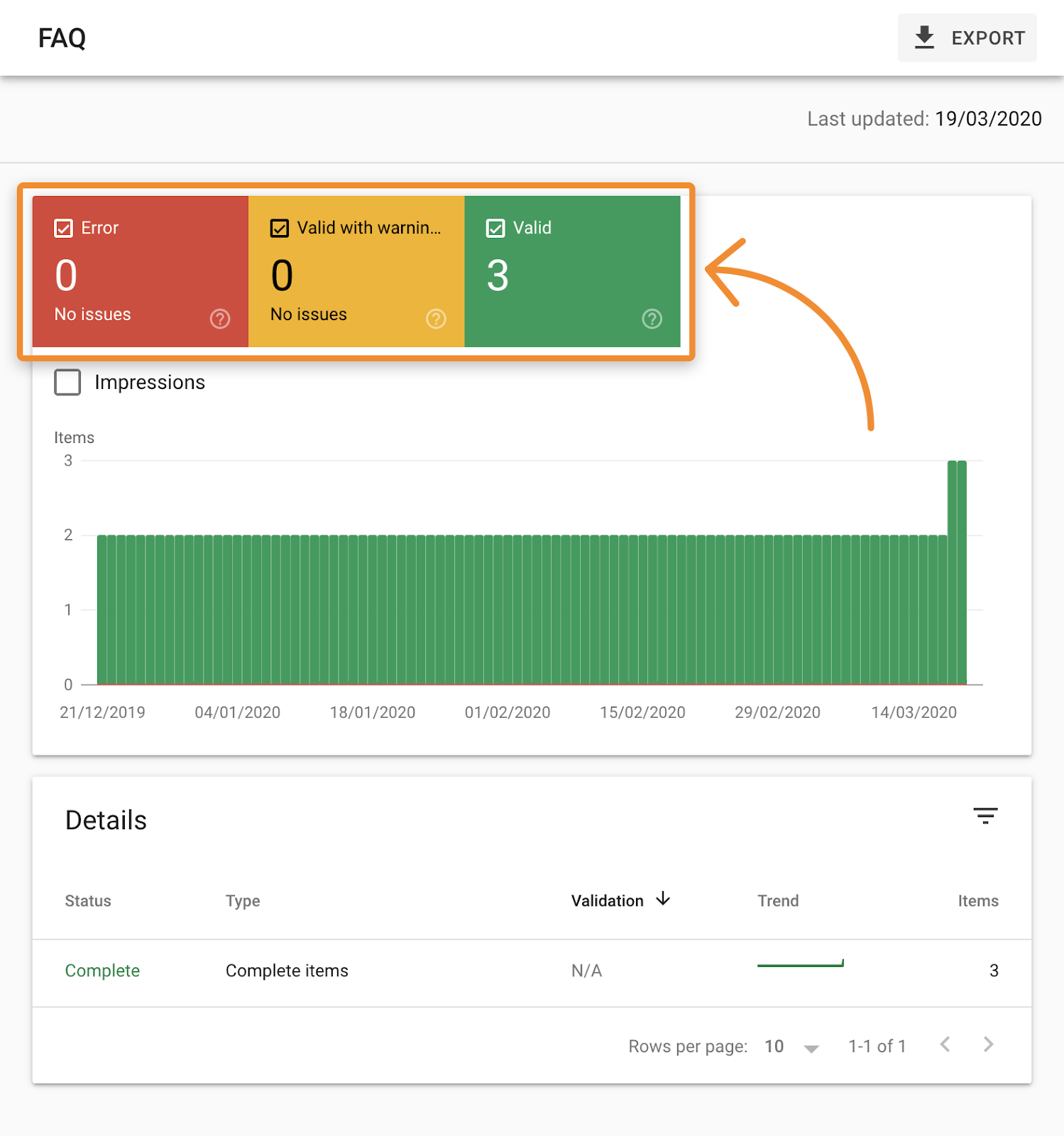
If you’ve already validated the markup, then you shouldn’t encounter any problems. The great thing about this is that you don’t need to set up anything. It will appear in GSC after you deployed the rich results markup and Google picked it up by crawling those pages.
Final thoughts
Getting more attention and clicks with rich snippets is great, but keep in mind that the structured data behind them is part of something much bigger.
Google uses structured data to help build the Knowledge Graph. It’s this that helps Google deliver more relevant search results and it also feeds other types of SERP features like Knowledge Panels.
Understanding how the Knowledge Graph works, and how to use it to your advantage is a crucial SEO skill to have now and in the years to come.
If you have any questions or remarks, feel free to ping me on Twitter.